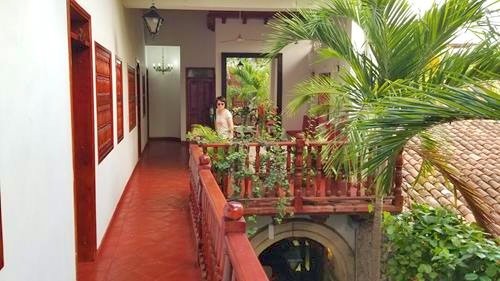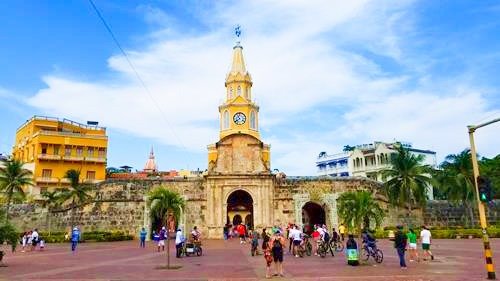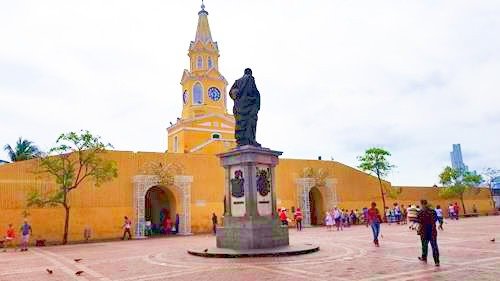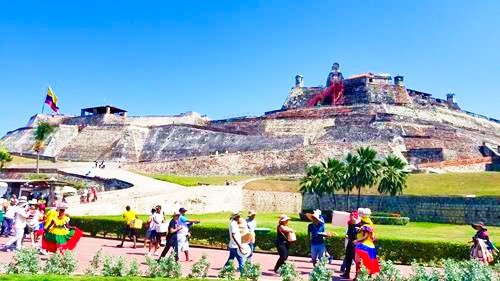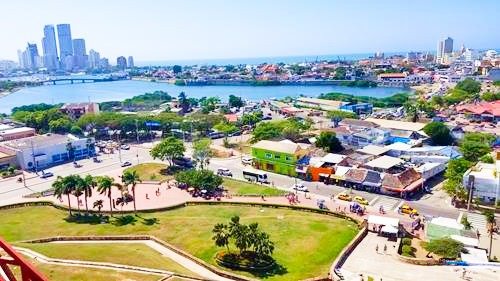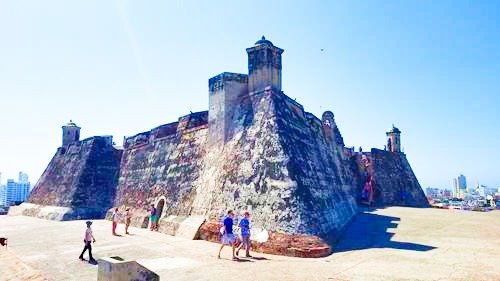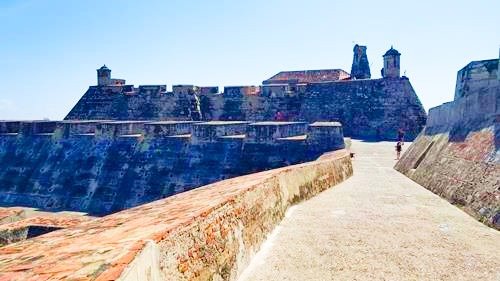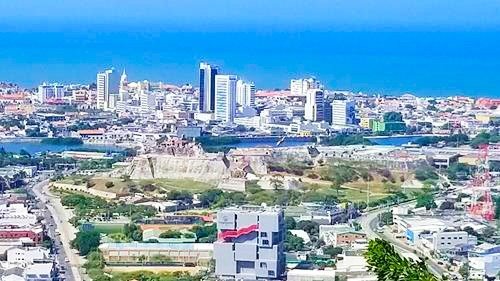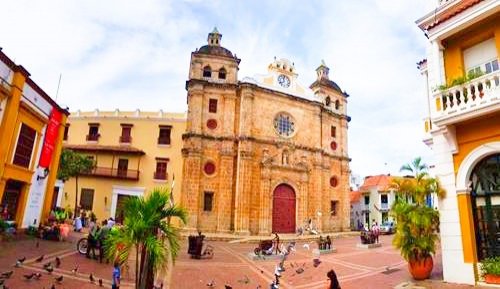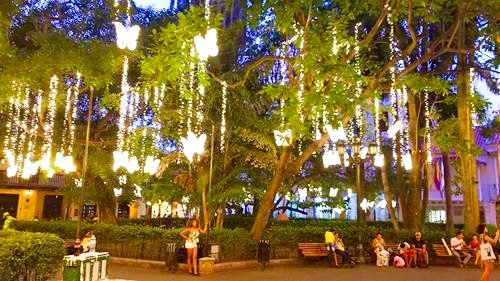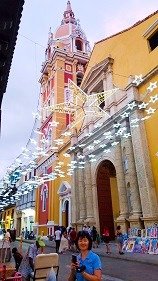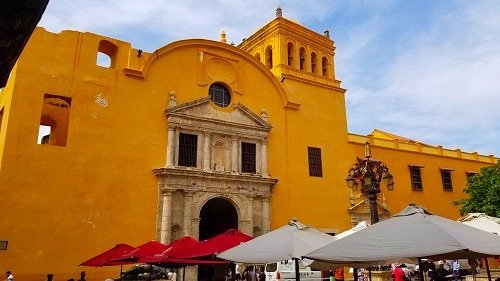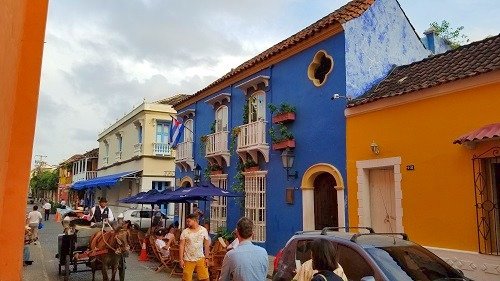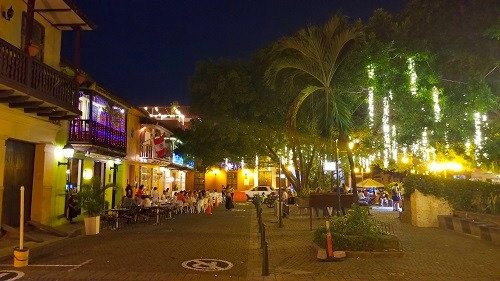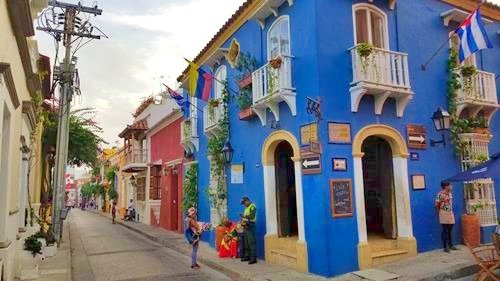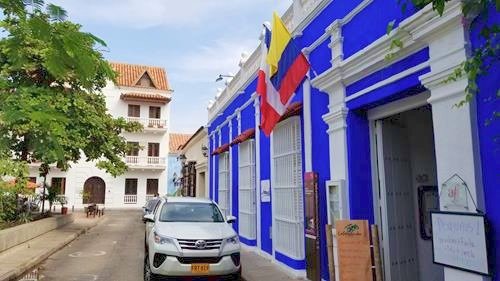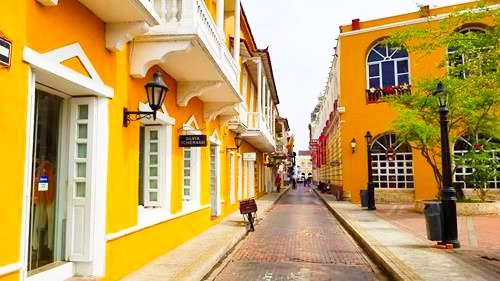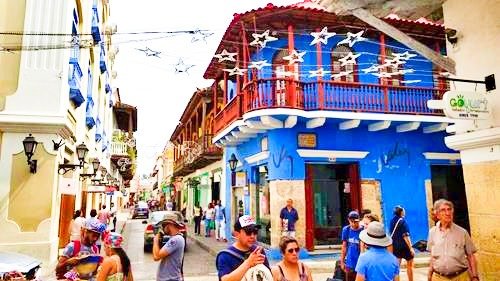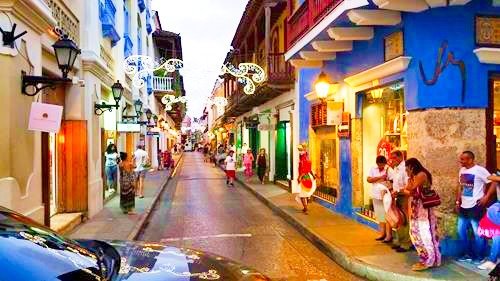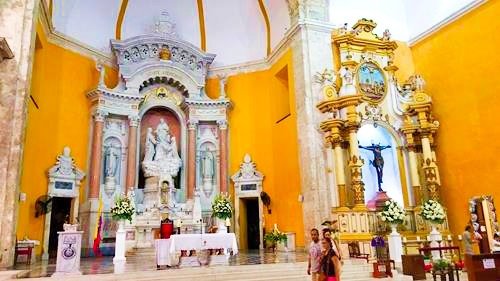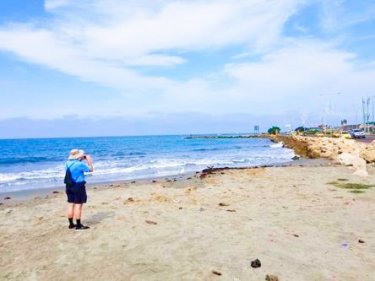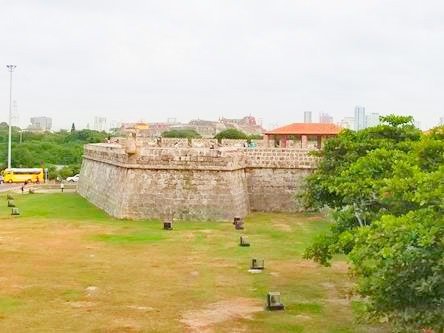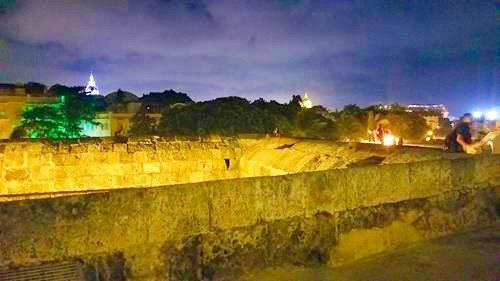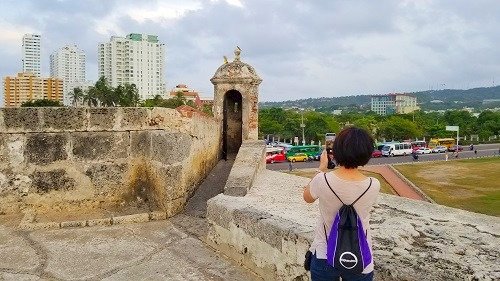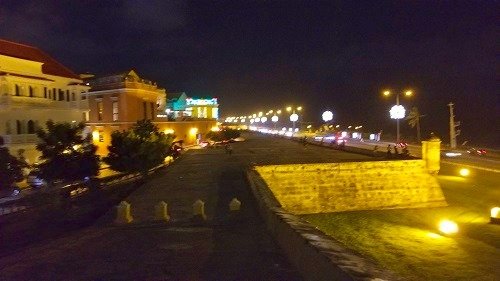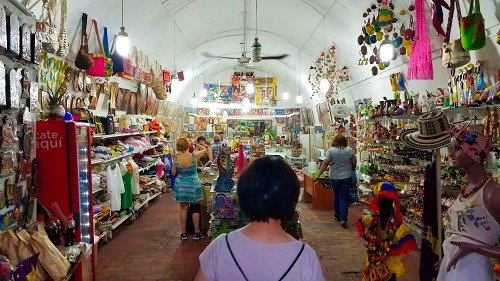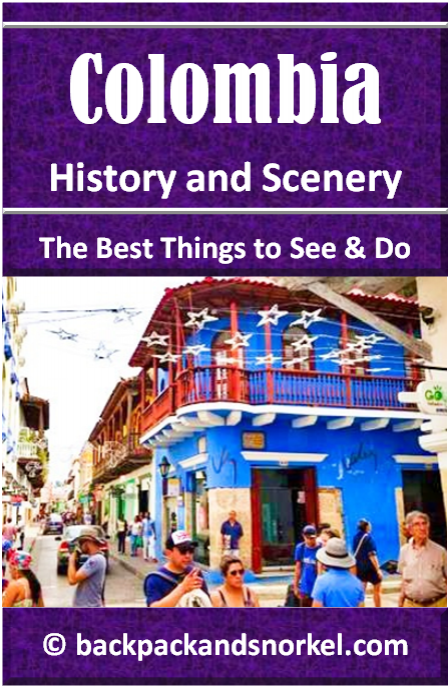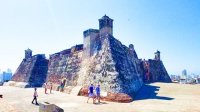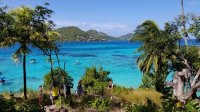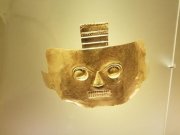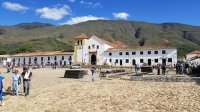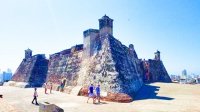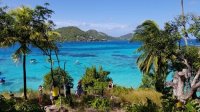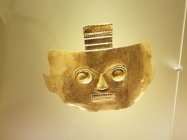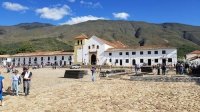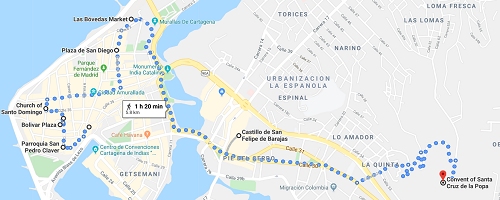To help support the expenses of hosting this blog, some of the links on this website are “affiliate links.” This means that, if you click on the link and purchase an item, I will receive a small commission from the seller; there is no added cost to you.
BACKPACK AND SNORKEL TRAVEL GUIDE FOR Cartagena, Colombia - Cartagena PURPLE GUIDE
This Backpack and Snorkel Travel Guide (Cartagena Purple Guide) provides information about the best things to do in Cartagena and ensures that you will be Making Memorable Moments on a relaxing vacation in Cartagena. It also includes a self-guided walking tour of Cartagena.
How to get to Cartagena
Flying to Colombia from the US
We live in Pittsburgh, PA and there are basically two ways to fly to Colombia. The easy way and the complicated way. The least expensive flights had change of planes in Mexico City or Panama City, Panama and typically left Pittsburgh early in the morning and arrived in Colombia at night or the next day. For a few dollars more however, Jet Blue flies from Fort Lauderdale directly to Colombia across the Caribbean. This avoids time intensive layovers and sleep-overs and brought us to Cartagena at around 3pm on the same day allowing us more time to experience beautiful Cartagena.
You arrived in Cartagena – what now?
We arrived at the airport around 3pm. Going through immigration was fast and efficient as Cartagena has a small and compact airport. Once you get out of the airport building, make a left and you should see another door behind which you find an ATM machine. We got our Colombian Pesos from there.
Now you have a choice to either take a taxi to your hotel or to walk one block outside the airport where some people claim there are buses bringing you to Centro. Well, we only saw buses that go to other places but not Centro, so we took a cab which was very convenient and saved us some time that we used for sightseeing.
As it was soon to get dark, we briefly explored historic downtown, went on the city wall and then on to a supermarket to buy food and water for the next several days and eat dinner.
Supermarkets, however, are hard to come by. We walked over the city wall all the way to the Exito supermarket (map) at the Eastern side of the city wall. Afterwards we walked back to the hotel through the beautiful downtown area.
There is no shortage of restaurants in Cartagena and a walk on the city wall during the day and at night are absolute must-do’s.
The next day, we did a walking tour of downtown Cartagena that I describe here. There are two sites that are not in walking distance. To do everything on this list without rushing it, you should reserve 1.5 days. Here are some photos of the impressive city wall:
What to do in Cartagena
Cartagena has the most beautiful historic downtown area that I have ever seen. On top of that, it has two must-see attractions outside the old town. You should plan at least two days to explore Cartagena.
Click here for a self-guided tour of the old town and major attractions.
Where to stay in Cartagena
The historic downtown area within the city walls is safe and easy to walk. Staying there is by far your best bet to experience this beautiful city and to Make Memorable Moments.
We stayed at Hotel Casa del Curato (map). It is located inside the city walls and in walking distance to almost all of Cartagena’s main attractions. Plaza de San Diego, a nice spot for dining and people watching is about 100ft away. Hotel Casa del Curato’s facade blends in with the beautiful exteriors of other buildings in the historic old town. Its public interior spaces are absolutely beautifully decorated. The hotel has rooms on 3 floors, a small courtyard and a water fountain. There is even a small pool and next to it is a small kitchen with tables and chairs which act as the breakfast area. The free breakfast starts at 7:30am and is served – it is not a buffet. Per person, it consists of 1 dish of pineapple, water melon and papaya slices, a fruit juice, 2 slices of bread (can get more if you ask), margarine, marmalade, a cup of coffee (can get more if you ask), 2 eggs your way and, on Sundays, one pancake and honey. While the ladies that prepared breakfast did not speak English, the lady at the reception spoke excellent English. The hotel personnel was super friendly and helpful. Our room was small but adequate with a queen size bed and a small fridge. The room has a quiet and efficient A/C which only works if the window is closed correctly (!...we experienced it the hard way). The windows are closed with movable wooden blinds; there is no window glass and there are no mosquito nets. The bathroom has a good size and 2 bottles of shampoo, 2 pieces of soap and a shower cap were provided every day.
The shower was luke warm on the 1st day, but nice and warm on the other 2 days if you let it run for a bit. Wifi was fairly fast and reliable.
Long story short: this is a very nice and beautiful hotel with great staff and close to everything. We would definitely stay here again.
For Pinterest users, here are some pins that you can use:
Self-guided walking tour of Cartagena
While I feel honored if you follow the self-guided tour that I have outlined below, I want to encourage you to get off the path and explore all possible side streets and other buildings that are open to the public. Cartagena has, in my opinion, the most beautiful historic downtown area on the planet and you will see many architectural jewels by getting off the beaten path.
Torre del Reloj (Map) and Plaza de los Coches
Torre del Reloj or Clock Tower, is Cartagena's most famous landmark and probably the best place to start your exploration of the historic downtown area. In the past, it was the main gateway to the walled city. The drawbridge over the moat has long been replaced with a cobblestone walkway. The plaza on the inside of the city wall is called Plaza de los Coches. You will find tons of small stores and street vendors there, but sadly those street vendors will approach you non-stop trying to sell you their souvenirs, jewelry, and whatever else they sell. Luckily, if you say no with a smiling face and turn away, they will leave you alone until somebody else approaches you 30 seconds later.
We were there during Christmas and we went outside the gate to explore the small park (Parque Centenario) which was beautifully decorated for Christmas. It was nice during the day, but spectacular in the evening. Then we walked over to the "Galeon Bucanero", which is a replica of a Spanish 17th century galleon. It is a museum telling a story about the history of pirates in the Caribbean and it has a souvenir shop and a restaurant.
Plaza de San Pedro Claver with Iglesia de San Pedro Claver (map)
Now go back inside the city walls and head South along the city wall passing Plaza de la Aduana and arrive at Plaza de San Pedro Claver with Iglesia de San Pedro Claver (map).
This convent was founded by Jesuits in the early 17th century under the name San Ignacio de Loyola, but was later renamed to honor the Spanish born monk Pedro Claver who lived and died here. Pedro Claver was an impressive person who spent his time caring for African slaves which made him the first person canonized in the Americas in 1888. Pedro Claver was also known as “Apostle of the Blacks” and “Slave of the Slaves”.
Plaza Bolivar (map)
Continue on Calle San Juan de Dios and walk by or visit the Cartagena Naval Museum, pass Plaza Santa Teresa and arrive at Plaza Bolivar (formerly Plaza de Inquisición), which is one of the most architecturally impressive plazas in Cartagena. It features a statue of Simon Bolivar in its center. Around the plaza you can visit the Museo del Oro, the Palacio de la Inquisición and La Biblioteca Bartolome Calvo.
The next stop is the Catedral (map)
Construction on the Catedral started in 1575. While still under construction, it was partially destroyed when Francis Drake attacked the city in 1586. Completion was in 1612.
The next stop on our tour is Plaza Santo Domingo with Templo (Iglesia) de Santo Domingo (map)
This is the oldest church in Cartagena. Originally built in 1539 at Plaza de los Coches, it was destroyed by fire and rebuilt at its current location in 1552. Due to faulty design, support buttresses had to be added to the wide open design after cracks appeared in the roof.
The next stop is Plaza de San Diego (map)
As mentioned earlier, this plaza is a nice spot for dining and people watching and about 100ft away from our hotel, Hotel Casa del Curato.
We then finished our city walking tour at Las Bovedas (map)
Las Bovedas were dungeons built deep into the city wall to house ammunition and military provisions. Later on, they were used as jails and nowadays they house 23 souvenir stores selling your everyday souvenirs but also lots of beautiful art made by local artisans.
This is the end of the walking tour. However, Cartagena has two more major must-see sites that are not within walking distance. It is easiest to get a taxi to bring you there. Before I describe these two sites, I like to show you some more photos of downtown Cartagena.
The first must-see site is Castillo San Felipe de Barajas (map)
This fortress is the largest and strongest ever built by the Spanish outside of Spain. As such, it was never conquered even though there were several attempts.
The original fortress, whose construction started in 1657, was much smaller than the structure that you see today. It is due to an extensive enlargement that started in 1762. The fortress covers the entire original hill and consists of multiple fortifications that are connected through a set of underground tunnels. The fortress is designed in a way that individual areas could be completely separated from each other so that an enemy would have needed to conquer multiple parts of the fortress in order to gain full control over it.
The tunnels were also designed in a way that they amplified any sound the enemy made, so the defenders would know if anyone was approaching through the tunnels. Some of the tunnels are open for visitors.
Convento de la Popa (map)
From the castillo, you can see Convento de la Popa in the hills. La Popa is the last must-see site in Cartagena. If you think that the hill that La Popa is located in looks like the back end (stern) of a ship then you are not alone. Convento de la Popa literally means “Convent of the Stern”. While La Popa is the popular name, the full name of the convent is Convento de Nuestra Senora de la Candelaria. It was founded in 1607 as a small wooden chapel. About 200 years later, it was converted into the structure that you can see today.
To get there, hire a taxi as the long steep zig-zagging road leads through a poor neighborhood where robberies of hikers have been reported.
Before you enter the building, you have a fantastic view of Cartagena and the ocean. The court yard has beautiful flowers just about everywhere but for many the main attraction is the image of La Virgen de la Candelaria who is the patroness of Cartagena.
Bearing witness to the poor neighborhood that La Popa is located in, we saw kids extending a long wooden branch with an empty half bottle at the end from behind a fence towards one of the windows begging for money.
For everyone who has time, there are several day trips that can be done from Cartagena. Your local hotel will likely be able to make reservations with different tour companies for you.
Cartagena does not have any nice beaches for sunbathing and/or swimming. For everyone longing for a relaxing beach vacation, there are day trips to the Islas del Rosario (map), an archipelago of 27 small coral islands and several small islets about 22 miles (35km) South East of Cartagena. Boats leave from Muelle Turistico de La Bodeguita between 8am and 9am and typically return between 4-6pm. Typical stops for many tours are Isla de San Martin de Pajarales where you can visit the aquarium (extra admission) or swim in the ocean and Playa Blanca on Isla de Baru.
Another alternative is to go to the farther away and far less traveled and more beautiful Islas de San Bernardo (map).
Another option for a day trip is a visit to Volcan de Lodo El Totumo (map).
El Totumo is a 50ft (15m) tall mud volcano that is located about 30 miles (48km) North East of Cartagena. The best way to get there is with an organized tour.
Head up the stairs to the top of the volcano, enjoy the scenic view from up there and the step into the luke warm mud. When you are properly cooked, head to the nearby lagoon to rinse yourself off.
Be aware that you will be pestered by locals to hold your camera, watch your clothes, take photos, massage you etc. and they all demand tips. None of this is included in the admission fee. So, bring plenty of small bills.
Our next destinations were the Providencia and San Andres Islands. Click here to see what we did in Providencia and San Andres.
Here are descriptions and tours of the destinations that we visited:

